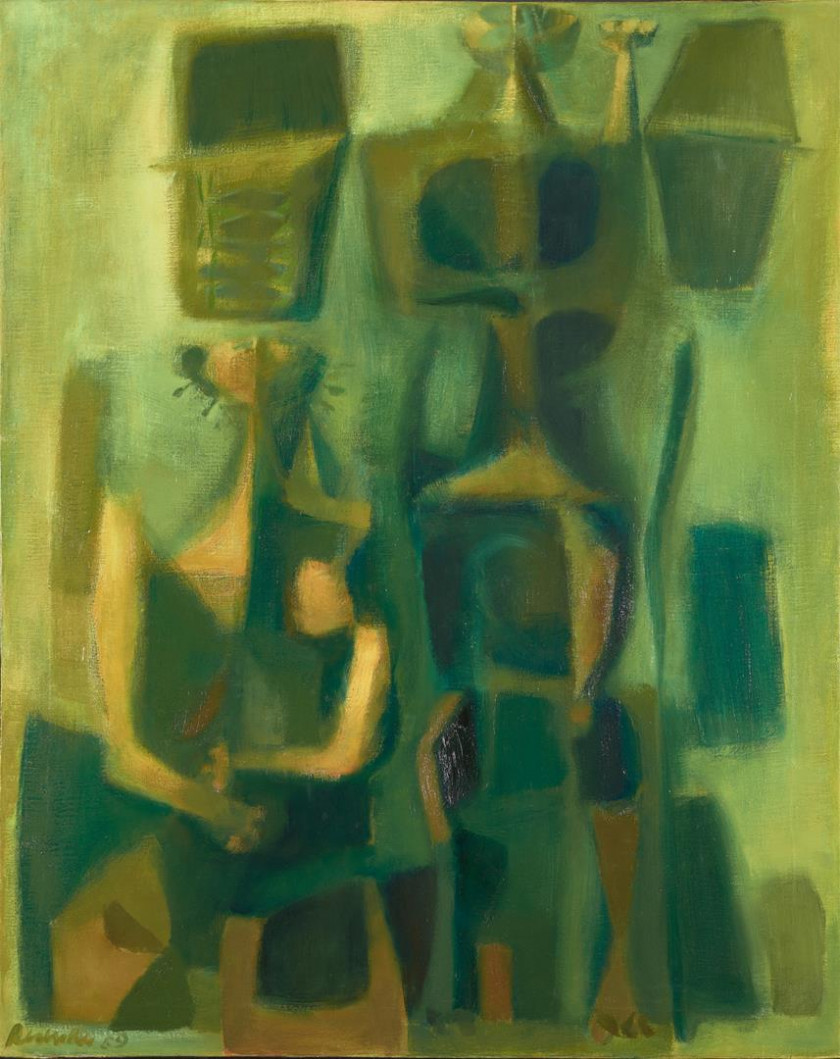Os Mercadores [The Merchands]
painting


1959
Oil on canvas
100 X 80,5 cm
Graduated from the Oporto School of Fine Arts in 1945, Júlio Resende’s work synthetized several plastic languages: to the initial expressionism he added the assimilation of the volumetric and formal construction of Cézanne and the cubists, learnt in Paris, where he went in 1947 with a fellowship from the Higher Culture Institute.
This syncretism of artistic languages will be influenced by the national artistic and political context. In the artist’s own words, his departure for Viana do Alentejo in 1949 and his return to Póvoa do Varzim in 1952, were determinant for his reflection about the world and his production. He reveals in a 1982 interview that, from Alentejo, he absorbed “the whole austere environment and the self-centring suggested by the landscape”, “the structures of the inner and outer landscape of men”; after his return to the north he went back to being “an instinctive painter from Oporto”, creating a more informal painting in which “the curve became the dominant line”. In this work of 1959, some of his essential characteristics are present: a great rigor and sobriety in the structuring of the composition, a tendency for abstract shapes that had manifested since the mid-fifties, faded contours, shade contention and an atmospheric glazing of the image.
Contemporary to the debate between neo-realism and abstraction in Portugal, Resende formulates his very own plastic reply to the aesthetic and political situation of his country.
Luísa Cardoso